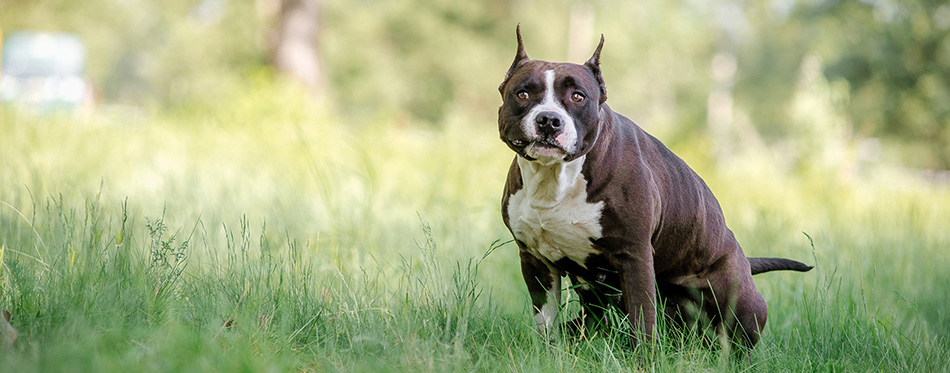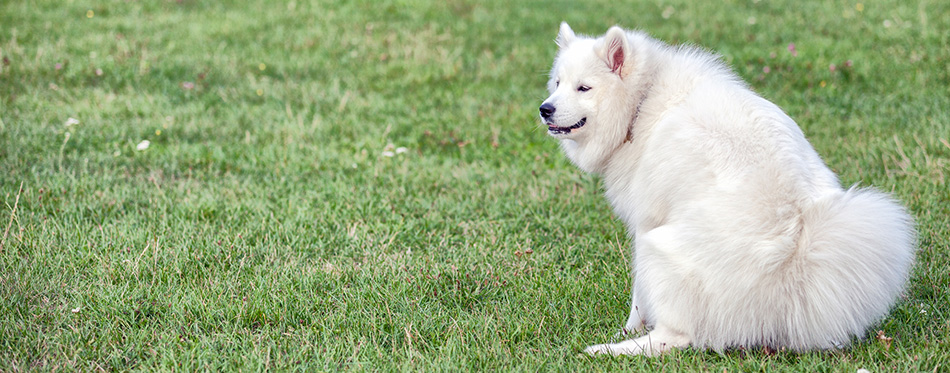The consistency and color of a dog’s feces can tell you a lot of things about your pet. It can tell you if its digestive system is working properly. The color of its poop can also tell the dog’s owner if it is time for a more comprehensive examination by a veterinarian. As gross as it may be, looking at the color of your dog’s stools can help you understand its current state of health. Here are some of the colors of dog poop and what they mean.
Brown
Brownish stools are always a good sign. It tells you that your pet’s digestive system is working in an efficient manner. The brownish tinge in stool is due to the presence of bilirubin. This is a substance that the liver produces and stores in the gallbladder as bile. The bone marrow also produces bilirubin. This substance gives the skin its brownish to yellowish tinge. If you see your pet passing brown poop, then you know that the dog is at its peak health. Its liver is functioning at an optimal level.
However, you should also take note of the stool’s consistency. It should be well-formed. There are brown stools that are too dry that they form cracks on the surface. There are also brown stools that are watery. If you see these versions of brown stools, then something might be wrong with your dog.

White
Dogs that are fed raw food, including bones, often present with white stools. It is usually a sign of increased calcium levels in the animal’s bloodstream. Calcium gets excreted into the colon and passed as white feces. There are also health conditions that can lead to high calcium blood levels. Any disease that can lead to the destruction of bone tissues can result in hypercalcemia.
Calcium makes up most of the bone tissue. When destroyed or damaged, the bone tissue releases calcium and other minerals in the blood. This leads to an increase in calcium levels in the blood. Diets that have high calcium levels can also lead to hypercalcemia. This can also produce stools that have a whitish color. If you notice this color in your dog’s poop more than twice, it is best to seek the advice of your veterinarian.
Green
There is only one thing that pet parents have in mind whenever they see a green-colored dog poop – grass. It is possible that your pet may have helped itself to eating the grass on your lawn. It is not an unusual behavior. Many dogs eat grass in an attempt to soothe their upset stomach. This is not the only reason why your dog may be passing green stools. Parasitic infections can also produce green poop in dogs. It can also be a sign of rat bait poisoning or other problems in the dog’s gastrointestinal tract.
One way you can eliminate these potential causes is by looking for plant material in the dog’s feces. If you see blades of grass or undigested leaves, then you’ll know that the green poop is secondary to your pet’s eating grass. This does not excuse you from bringing your pet to the vet, however. There must be a reason as to why your pet is chomping down on plants.
Black or Dark Red
Black stools are always an indication of bleeding in the upper digestive tract. It could be an ulcer in the duodenum or some other cause of bleeding. The gastrointestinal tract is a very long tube that starts in the mouth and terminates in the anus. If there is bleeding in the upper GI tract, it will take some time before the stool will pass through the anus. This is enough time for the blood to coagulate, giving the stool its black color.
This is a dog poop color that no pet parent should ignore. Ulcers can bring pain. Intestinal parasites can also cause bleeding in the GIT. Raw bones and other sharp objects that the dog may have ingested can also injure the GIT. All of these can cause upper GI bleeding. Your vet should be able to help you to determine the exact cause.
Yellow
If brown indicates normal bilirubin levels in the stool, yellow feces indicates excessive amounts of bilirubin. This often occurs in problems with either the liver or the gall bladder. It is also possible that there is an increased destruction of red blood cells, causing the liver to produce more bilirubin than usual. Hepatitis and autoimmune disorders of the liver can also produce increased levels of bilirubin.
If your pet is also taking certain drugs like paracetamol, it is also possible that the animal is showing acetaminophen toxicity. Gallstones, tumors of the pancreas, gallbladder cancer, and gallbladder inflammation can also lead to yellowing of the stools. Whatever the reason, your dog requires the attention of a veterinarian.
Gray
Gray-colored stools are always an indication of an obstruction in the flow of bile. Remember that bile contains bilirubin that gives stool its characteristic yellowish or brownish tinge. If there is an obstruction in the flow of bile, then there is no bilirubin to give ‘color’ to the feces. This creates a grayish stool.
Sometimes, the gray stool also looks greasy. If you notice greasy stools in your dog, the possible culprit is the inability of the pancreas to produce the right amounts of enzymes. The intestines will not be able to digest fat in the dog’s food without these enzymes. When your pet defecates, its stool will look very greasy. It is possible that the reason is a problem in the pancreas itself. It is also plausible that there is an obstruction somewhere between the pancreas and the small intestines. To be sure, bring your pet to the veterinary clinic for a more thorough examination.
Pink or Purple
This is a dog poop color that necessitates emergency veterinary action. Purplish or pinkish stools in dogs are almost always an indication of hemorrhagic gastroenteritis. This is very different from having black stools or streaks of red in the dog’s poop. There is also loose, watery feces in addition to the pinkish stool. Hemorrhagic gastroenteritis is almost always due to bacterial infection. Bacteria can release toxins in the dog’s intestines. These can cause inflammation and irritation. In severe cases, it can lead to the rupture of the blood vessels that line the dog’s intestines. Another potential cause of hemorrhagic gastroenteritis is food hypersensitivity.
One has to be very careful in diagnosing hemorrhagic gastroenteritis in dogs. Its signs and symptoms are very similar to parvovirus infections. Veterinary laboratory tests should reveal the presence of Clostridium perfringens in the dog’s stool; although, other bacterial species can also be present. Treatment requires aggressive intravenous therapy and appropriate antibiotics.
Orange
An orange-colored dog poop is almost the same as having yellow-colored stools. It often indicates an overabundance of bilirubin in the dog’s feces. It can be because of problems in the gallbladder or the liver. It can also be due to other health problems that lead to an increased destruction of red blood cells.
Another possible reason why your dog may be passing orange-colored stool is a faster-than-usual transit of the stool through the gastrointestinal tract. The stool will not be able to pick up as much of the bilirubin from bile if it moves very fast. The lower amounts of bilirubin that the stool is able to pick up leads to a yellowish color and not the brown color of normal stool. It is wise to seek a veterinarian’s opinion if ever you see orange-colored poop from your dog.

Red Streaks
If black stools are an indication of bleeding in the upper GIT, having streaks of red in a brown-colored stool is a sign of lower GI bleeding. The travel time from the site of the bleeding to the anus is shorter than an upper GI bleed. This prevents blood from coagulating. As such, you will see streaks of fresh blood in the stool of your canine pet.
There are a few reasons as to why your dog may have a lower GI bleed. It can be because of an injury in the rectum, the presence of a tumor in the colon, or the presence of colitis. In some cases, infection of the anal glands can also create red streaks in the dog’s stool.
White Flecks
If you notice specks of white in your pet’s stools, there is a chance that it is suffering from intestinal parasitism. The white spots of flecks that you see can be juvenile intestinal parasites. In most cases, they can be parasite eggs. It is also possible to pass adult intestinal worms through the stool. You will see spaghetti-like strands in such instances.
If you see these white specks on your pet’s stools, try checking for other signs of intestinal parasitism. There can be coughing, diarrhea, weight loss, change in appetite, vomiting, and a dull coat, among others.
Color is one of several stool parameters that can help you understand the current state of your dog’s health. Brown is the normal color. Any color other than brown should already be a red flag for pet owners.
Source:
- What Should Dog Poop Look Like?! – Michelson Found Animal

